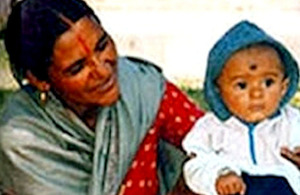DFID Research: getting help with child birth can be costly
Research findings lead to government help for delivery costs.

Mother and child in Nepal. Picture: DFID
As part of DFID’s work towards the Millennium Development Goal of cutting the maternal mortality ratio by three-quarters between 1990 and 2015, a project ‘Achieving MDGs 4 & 5: Strategic research to develop the evidence-base for policy for mother and infant care at facility and community level’ funded by the Central Research Department and led by the Institute of Child Health based in London, included a study on the ‘Costs of seeking assistance during child birth - magnitude and household impact in Nepal’.
Given that a poor woman in Nepal is 200 times more likely to die as a result of pregnancy and childbirth than a woman in the UK, there has been much interest in ways of financing health care for pregnant women, and the economic impact of different methods on the household.
Based on a large scale household survey in rural Nepal, the costs of delivery care to households were measured, and coping strategies to pay for care investigated along with women’s preferences for care at birth. The results indicated that households spend considerable sums, and resulted in the government introduction of a cash transfer programme, compensating women attending facilities for care during delivery.
The study also showed how the use of good statistics made a difference to policy making.
For more information, see the project record ‘Achieving MDGs 4 & 5: Strategic research to develop the evidence-base for policy for mother and infant care at facility and community level.’
Other DFID funded projects of related interest include: Initiative for Maternal Mortality Programme Assessment (IMMPACT), and Reducing the dangers of pregnancy and maternal mortality in poor societies.